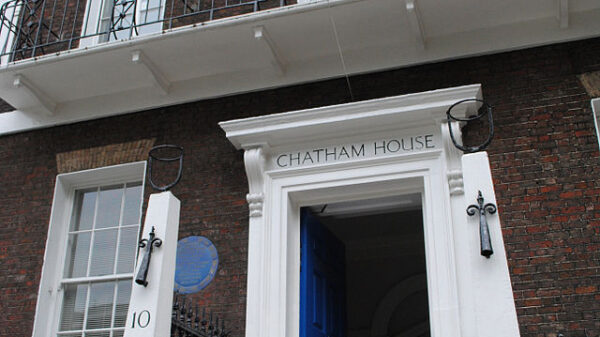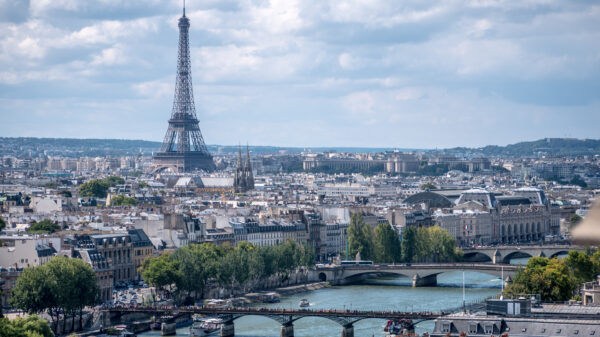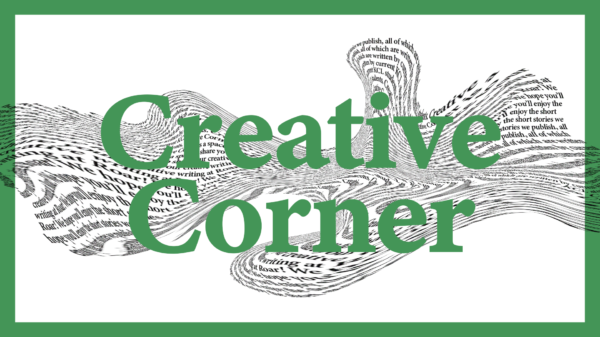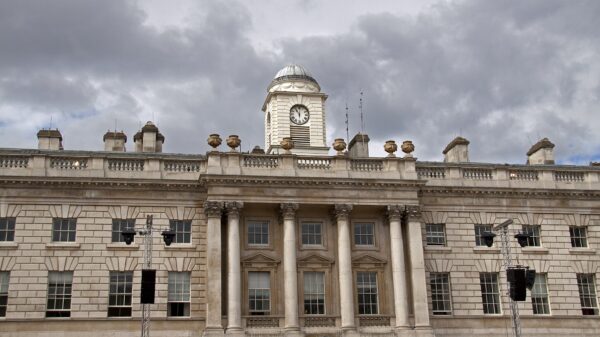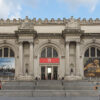Staff Writer Charlotte Galea takes a look at the new season of the famed Netflix show and concludes that giving up on historical accuracy and faithfulness to its literary template was one of the best things that happened to it.
Having started four of the ‘Bridgerton’ books and finished only two, it is safe to say that I was nervous for the latest instalment of its Netflix adaptation, especially with rumours that the writers were sticking adamantly to Julia Quinn’s novel. However, I am happy to report, dearest gentle reader, that I was quite pleased, and that, like Lady Whistledown herself, I have some very carefully chosen words to say on the subject.
The season follows our newest lead, an insipid wallflower and self-proclaimed spinster Penelope Featherington played by the enigmatic Nicola Coughlan, who has been head-over-heels for her best friend since they met. Colin Bridgerton, a gap-year student back from his travels portrayed by the talented Luke Newton and looking distinctly pirate-like, of course has no idea about Penelope’s feelings for him. Season two left us wondering how they would even patch up their friendship, let alone build a relationship. Our red-headed lead, consistently reduced to the side-lines of ballrooms, was left devastated after hearing Colin state that he would never marry her. We’ll see about that, Mr Bridgerton!
With both of her sisters married off and faced with a future caring for her strict and overbearing mama (the brilliant Polly Walker), Penelope decides that now is the time to find a husband, even if it can’t be Colin. She dons new dresses, new colours, does her hair differently and finds that although she can attract suitors, she is lacking the confidence to keep them. Along comes Colin, desperate to return to her good books and suggesting that he teach her the arts of charm and flirtation. What could possibly go wrong?
The season as a whole truly lived up to its genre in a way that the previous ones have not. It has always been a romantic show but with Penelope and Colin it accelerated to a new height. Perhaps it is simply that I am such a sucker for the friends-to-lovers pipeline, but the story had all of the perfect ingredients to make me very, very happy indeed. The jealousy Colin experiences watching Penelope and Lord Debling (a newcomer to the show, Sam Phillips), the gazes across ballrooms, all of the dancing (come on, even you swooned at the ‘You Belong with Me’ moment!), the injured hand and even the balloon incident!
(Could Penelope have absolutely moved out of the way? Of course. Do I care? Absolutely not.)
The chemistry between Nicola Coughlan and Luke Newton is palpable, and both act superbly. The best example that comes to mind is following from the carriage scene (you know what I’m talking about!), when they laugh together. It feels so giddy and sweet after such an intense moment, and you can’t help but believe that they’re two people deeply in love with each other – simply fantastic. Not to mention the awkwardness of the scene under the willow tree – we’ve all been there, Colin!
As Lady Whistledown herself says, “the head is forever making the heart its fool”, and Colin is truly made one in this season. Having observed Penelope fawn over the third eldest Bridgerton sibling for so much of the show, it was great to finally see it turned on its head. Newton does pining so well and portrays Colin’s difficulties with his masculinity brilliantly. It was interesting to see the conflict between Penelope’s independence and her desire for love, and Colin’s uncertainty of what role he plays in her life built on this magnificently. In a world where women are supposed to depend on their husbands in every manner, I thought it was a great addition to the show and made it fit for the modern audience.
Having said all of this, it is not all sunshine and roses. As much as there was to love, there was just as much to dislike.
There is no doubt that the season was incredibly romantic, but it did feel rushed. Perhaps it is because I so enjoyed the prolonged pining between Anthony and Kate that I wanted the same for Penelope and Colin. The beginning was stuffed full of promise, even though there was not enough attention on the stars. And while I would have liked the lessons (that had been such a big part of all the promotional material) to have lasted longer, it still felt like your classic fun and exciting romance. However, the unnecessary subplots took up too much time overall and all the open-ended questions at the finale of part one had to be swiftly resolved in part two. I got whiplash from how much there was going on!
Of course, it was pleasant to see we had more working class representation with the Mondrichs (played by Emma Naomi and Martins Imhangbe) and their development solved the issues with classist criticisms. But surely we’re all watching a show like ‘Bridgerton’ for rich people at balls – not reality? Portia’s struggle with the broker felt similarly unnecessary, though it did give us some comedy gold with her daughters (“inserts himself where?”). As for the Queen (Golda Rosheuvel) this season, though she was fantastic as always, I did not feel she added much to the plot overall. At the same time, while Violet’s (Ruth Gemmel) character development was very welcome, the sibling rivalry between Lady Danbury (Adjoa Andoh) and her brother Marcus (Daniel Francis) felt oddly petulant for a character usually so mature and wise. Anthony and Kate’s (Jonathan Bailey and Simone Ashley) scenes felt very irrelevant overall and mostly like fan-service – while I’m sure lots of people enjoyed it, I simply was not the fan being serviced!
That being said, Francesca’s romance with John Stirling (Victor Alli), while perhaps not needing as much screen-time as it received, was enjoyable and sweet to watch, and I resonated with the awkward shy character. Her husband was a fun new addition to the cast and Hannah Dodd made an excellent Francesca, taking the torch from seasons’ one and two actress Ruby Stokes.
As well as this, Eloise’s development was much-appreciated. I enjoyed seeing her feel a need to stay in the safety net of proper society, a fact in complete opposition to her stand on femininity and her own livelihood in previous seasons. Although, I will ask: where was Theo? Calam Lynch played opposite the outspoken Bridgerton daughter in season two and I very much missed our print shop apprentice!
As for Benedict Bridgerton… well.
Played by Luke Thompson, his development was not particularly a surprise, but a very welcome alteration to his storyline! This season was very much one of representation and Benedict shows this so clearly. Without wishing to spoil things, it is incredibly wonderful to see portrayals such as this in popular fiction. Both Benedict and Francesca are brilliantly portrayed and I for one am very excited to see what the writers have in store for them. The former, after many questions as to when he would finally get his time to shine, is even expected to be season four’s lead! Fans of the books will have picked up on hints towards a certain masquerade ball and I am very excited to see what the writers intend to do with it.
Similarly, the disabled representation was off the charts for this season and it was delightful to see. Lord Remington featured in a regency-era wheelchair and sign-language was used by multiple characters, including Miss Dolores Stowell and Miss Clara Livingston. Both of these were great additions to the series. In a genre so often hindered by historical accuracies or aesthetic choices, it is brilliant to observe that the show can find ways to include representation in all of its many wonderful forms.
Perhaps ‘Bridgerton’ manages to do this so well because it has finally admitted historical defeat, something that – as a historian and an avid watcher – I am so glad about. While in previous seasons the show clearly attempted historical accuracy with the lack of makeup on all of the actresses, the hair and the fashion choices, it is plain to see that all of this has been thrown out of the window entirely. The dresses are completely out of the realms of the regency era (though they do maintain the correct silhouette), makeup is evident on all of the women’s faces and Penelope even wears a red lip at one point – an absolute crime, Shonda! I, for one, was quite glad to see that they had finally begun to entertain the concept that ‘Bridgerton’ exists in its own parallel version of the historical period in which anything goes, really. Not only does it give them much more room for creativity with storylines, characters and costuming, but it can also allow me a much-needed breather from history!
On the whole, the season felt to be a distinct change from its predecessors. While there were definitely things that I did not like about it, I did find it really enjoyable, though I would have loved to see a flashback like the ones we’ve had in other episodes before. Just imagine a small scene depicting Colin falling off his horse and Penelope and him meeting!
But my own personal dreams of what the season could have entailed aside, it was a thoroughly enjoyable one. The leads were so incredibly strong, their romance off the charts, with depictions of consent that you rarely find in romantic television shows and exciting hints as to what’s to come for season four. But most importantly, it strayed away from the books – and that, in this instance only, is a marvellous thing.



